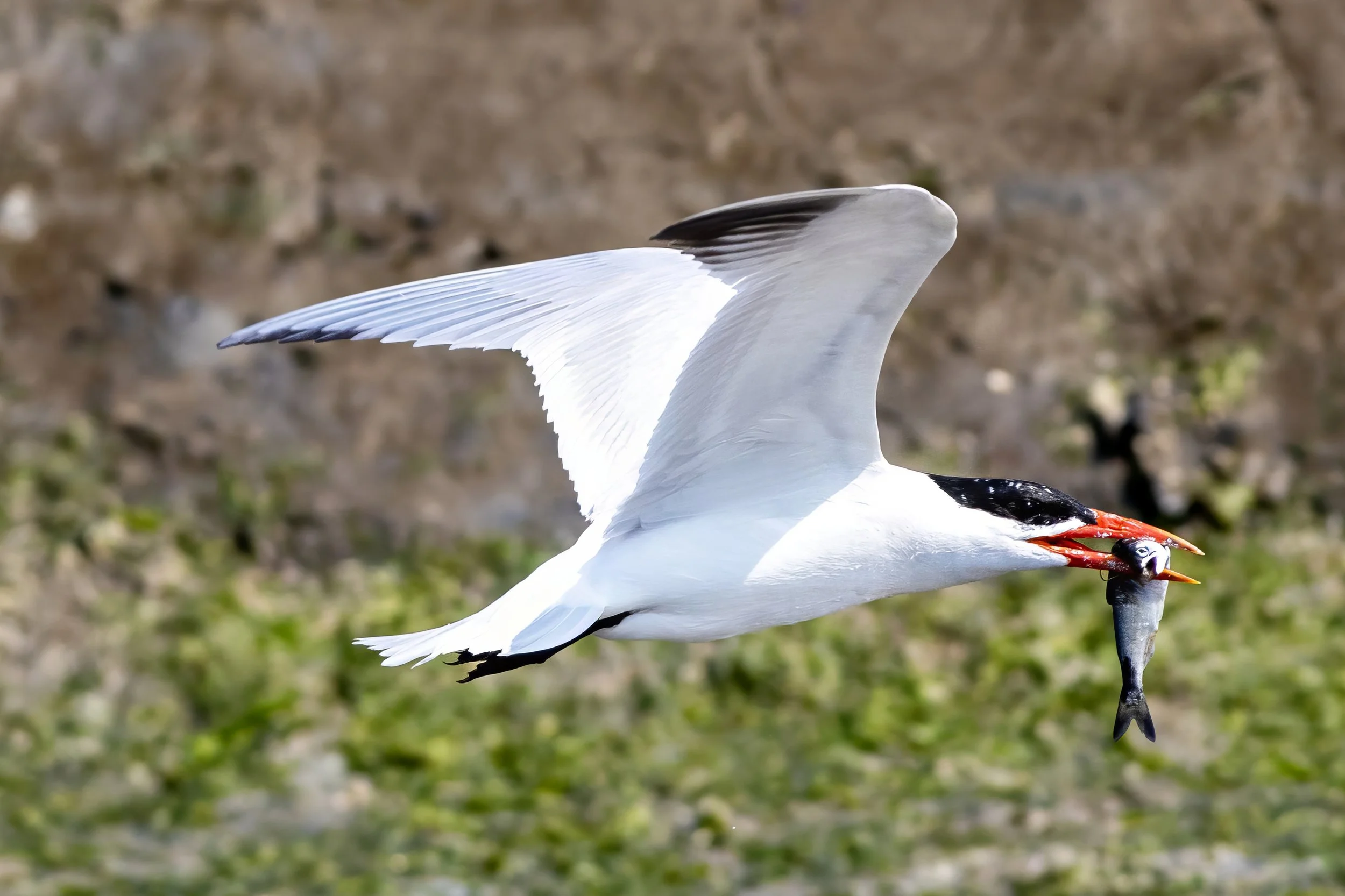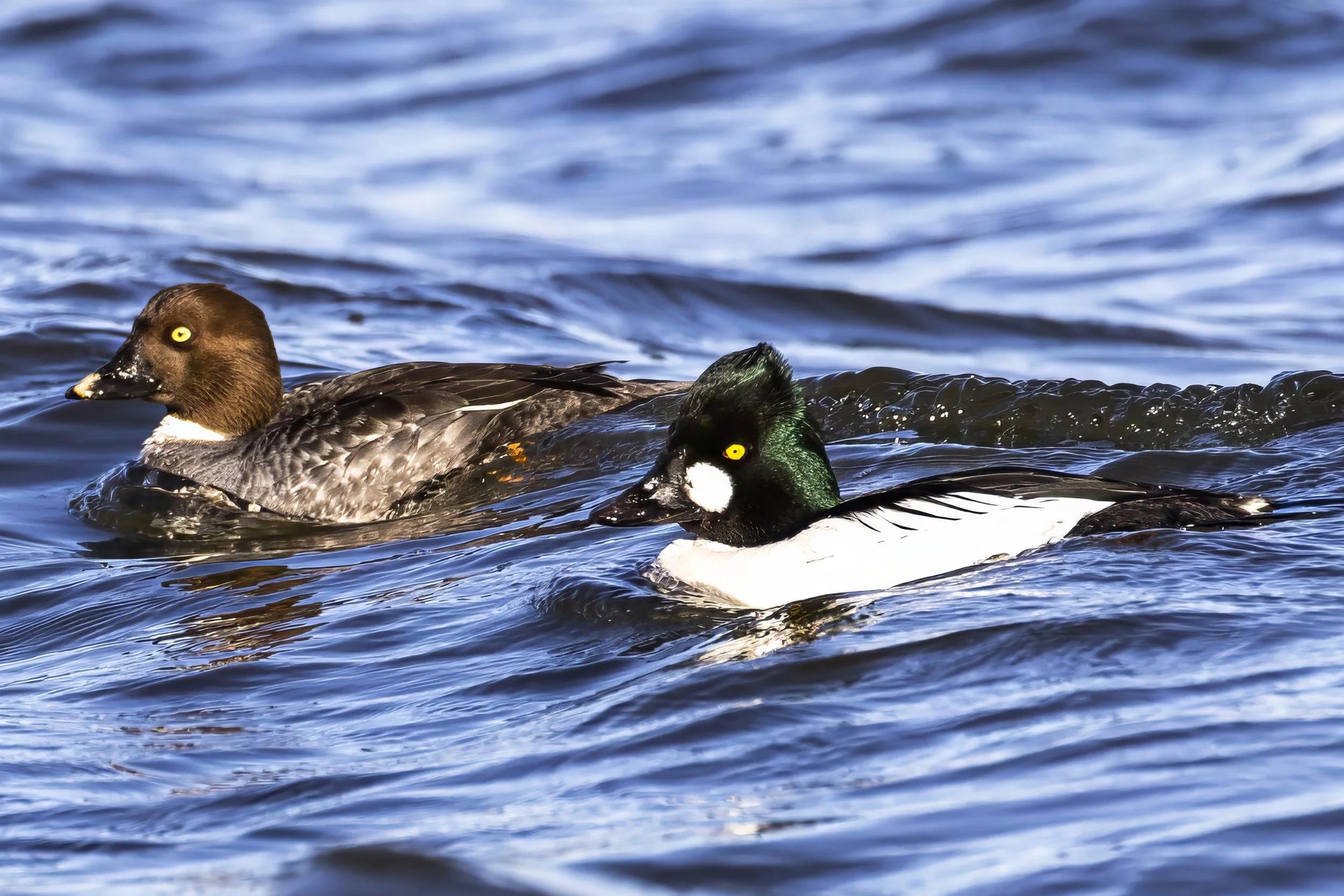
Photo by Janine Schutt
Bird of the Month
BIRD OF THE MONTH
January: Common Goldeneye
by Janine Schutt
Photograph of Common Goldeneye provided by Janine Schutt
Common Goldeneye
Two species of diving ducks that inhabit Kitsap waters in winter are the Goldeneyes. Often in proximity to one another, the Barrow’s Goldeneye is less common than its more widespread cousin, the Common Goldeneye, which tends to be seen locally in greater abundance. Here are some fascinating facts about the Common Goldeneye:
Male sports a striking green head in direct sunlight, with a trademark white dot on the cheek. Its back is black and its sides are mostly white.
Female has a brown head and back and a yellow-tipped black bill.
Male and female both have distinctive yellow eyes.
A strong flier, capable of cruising at 40 mph.
Breeds across the boreal forests of Canada, Alaska, Russia and Scandinavia.
Winters in the United Kingdom and parts of Europe, China and Japan, and throughout much of the United States.
Has a faster takeoff than the Barrow’s Goldeneye, getting airborne after running on the water for just a few steps.
Forages close to shore in shallow water, diving for aquatic invertebrates, including crustaceans, mollusks, dragonflies, insect larvae, fish eggs and small amounts of vegetation such as pondweed.
Prefers to forage in lakes without fish, so there’s less competition for food.
Known to be aggressive, often outcompeting other ducks for prime feeding areas.
Males have elaborate courtship displays of head throws and leg kicks, which they perform in small groups in winter. When a female is won over, she responds with her own head swings and establishes the bond with her new mate. Monogamous pairs form by early spring.
Cavity nesters, incapable of creating their own nests, pairs primarily utilize nest chambers previously dug out by pileated woodpeckers, often returning to the same nest for multiple consecutive years. Also uses nest boxes with wood shavings in the bottom, which simulates the floor of a natural cavity.
Clutch size is four to nine eggs.
Fledglings leave the nest within a couple of days. Following their mother’s call, the chicks leap from the nest, which may be 40 feet high, bouncing harmlessly off the leaf litter. They then follow their mother to the nearest water.
Rarely hybridizes with the Barrow’s Goldeneye.
